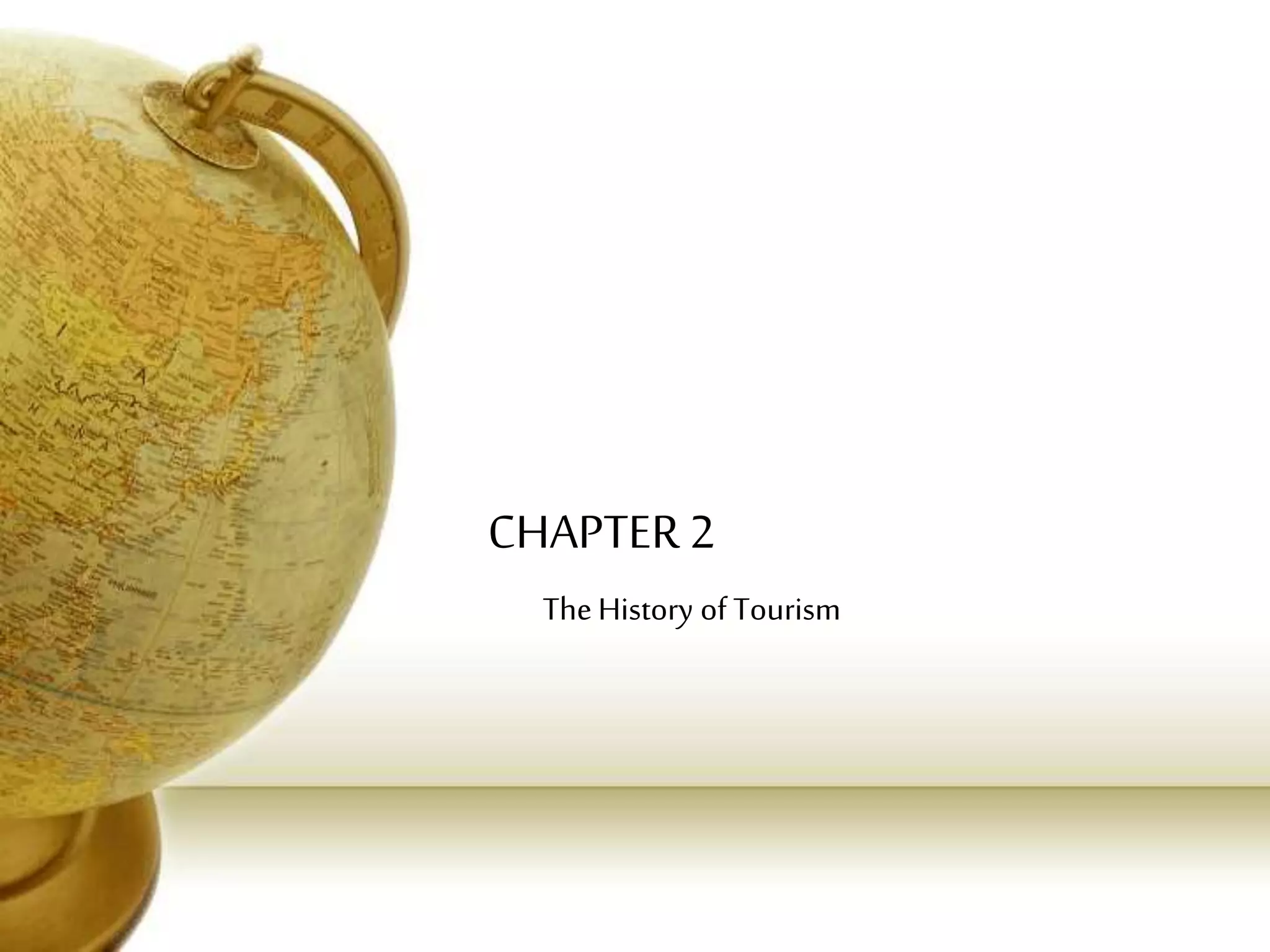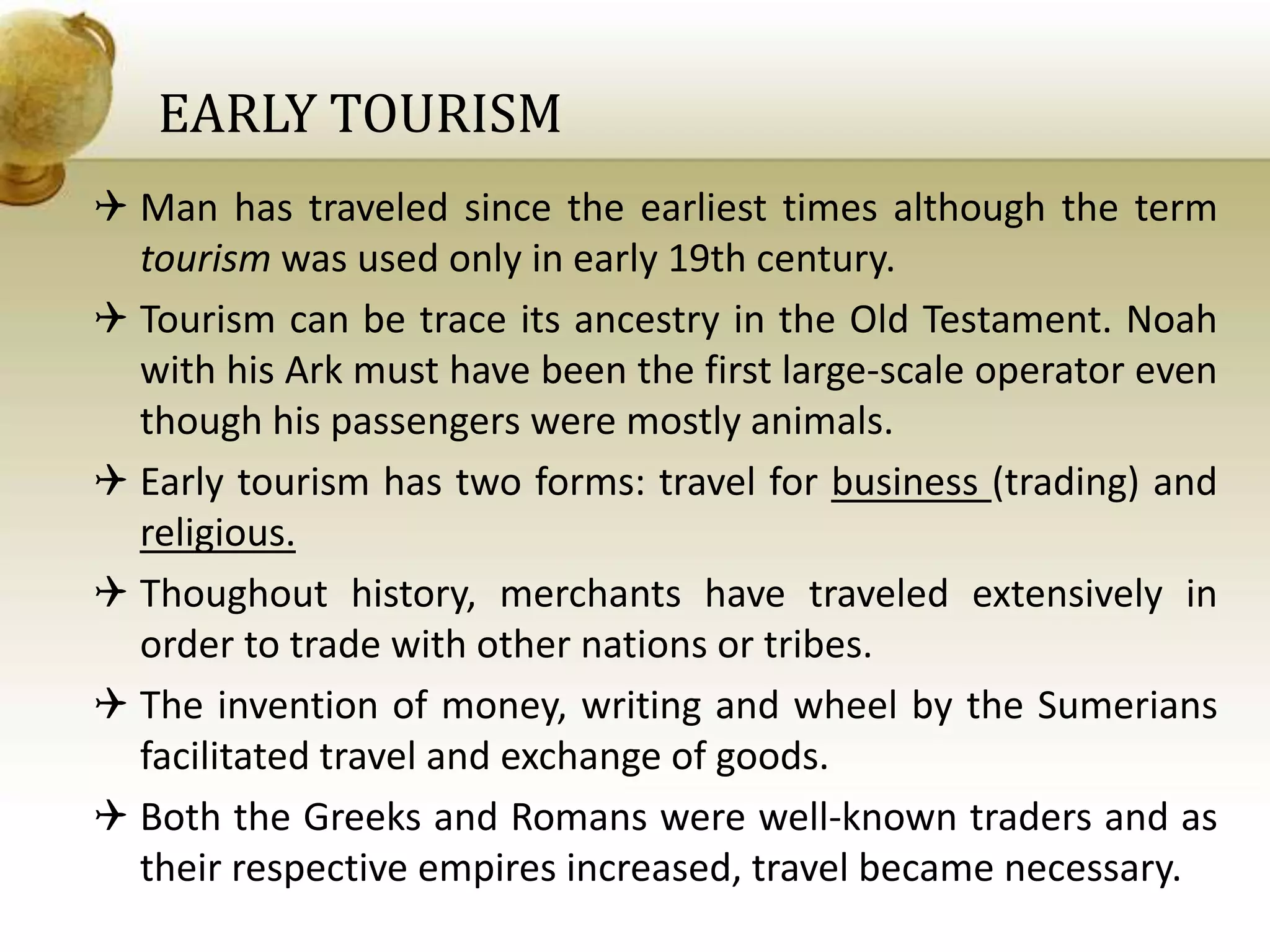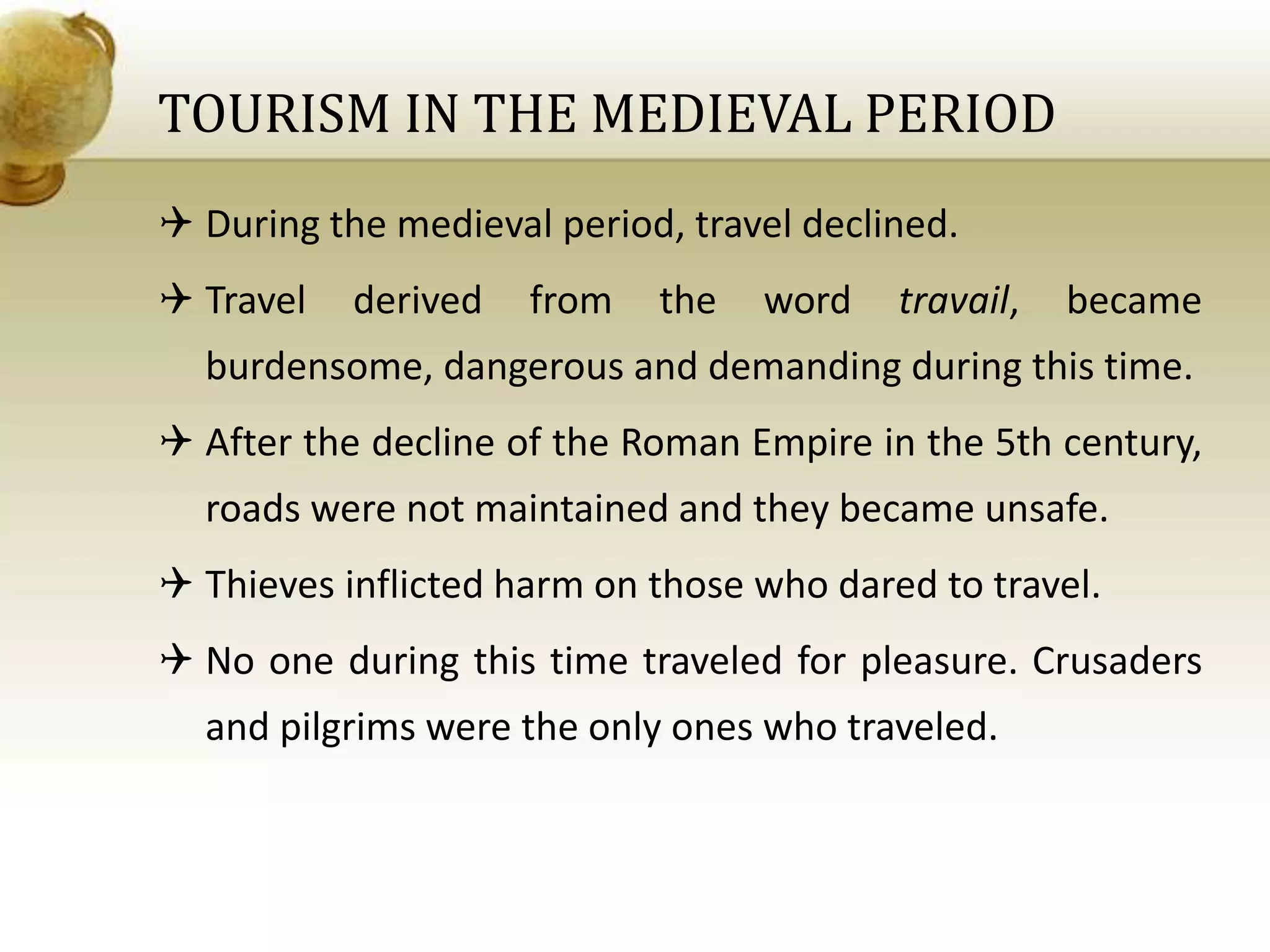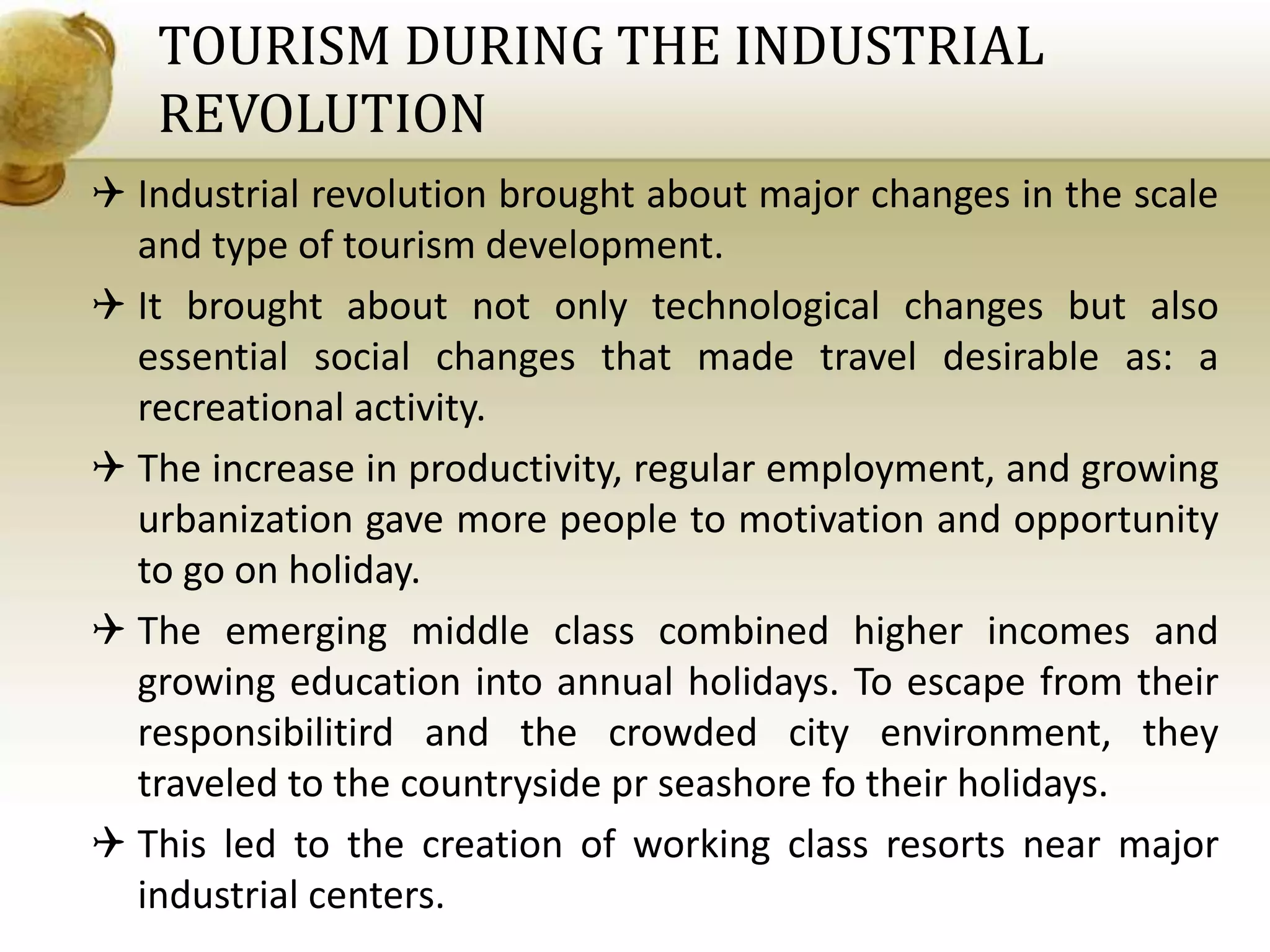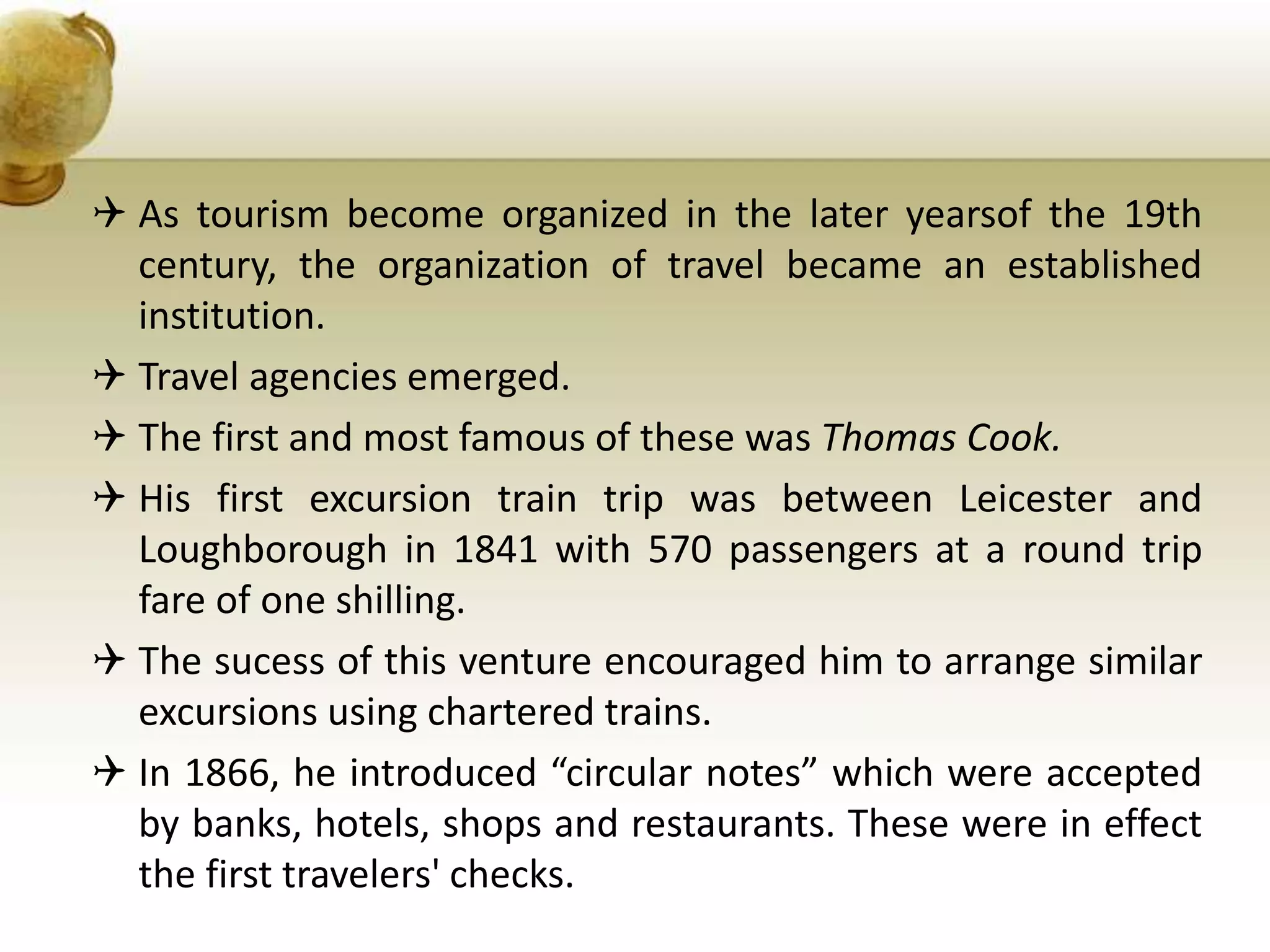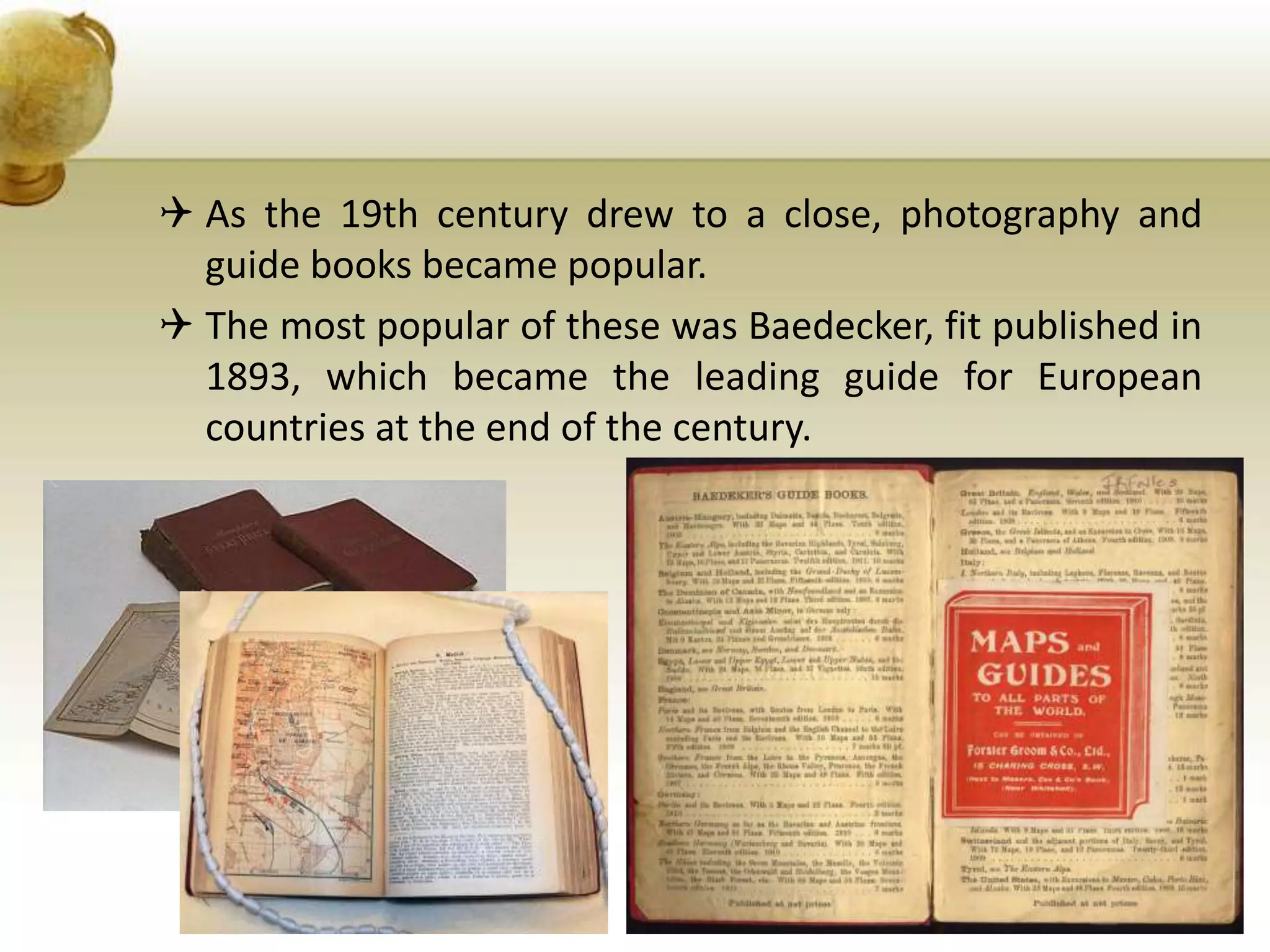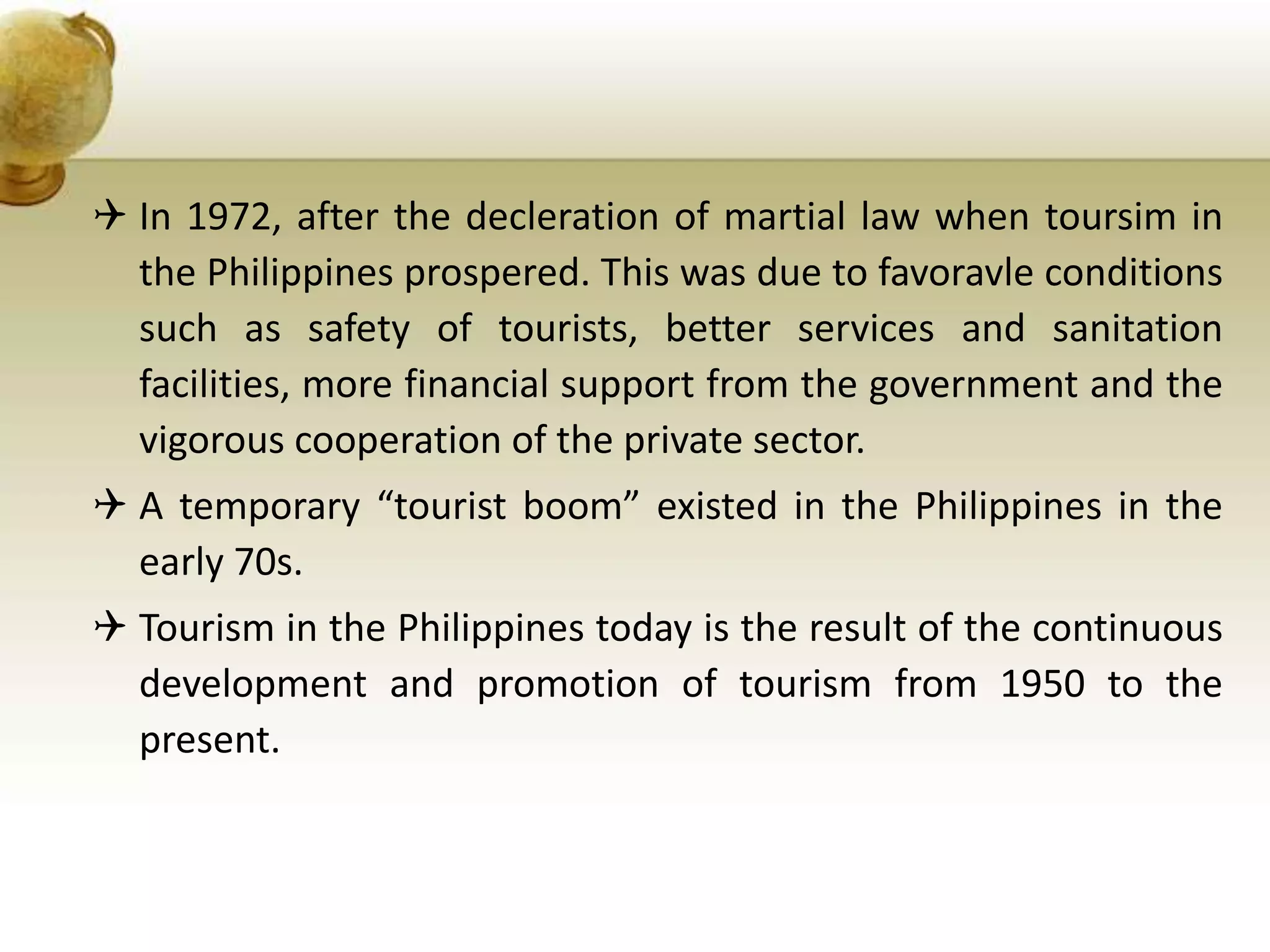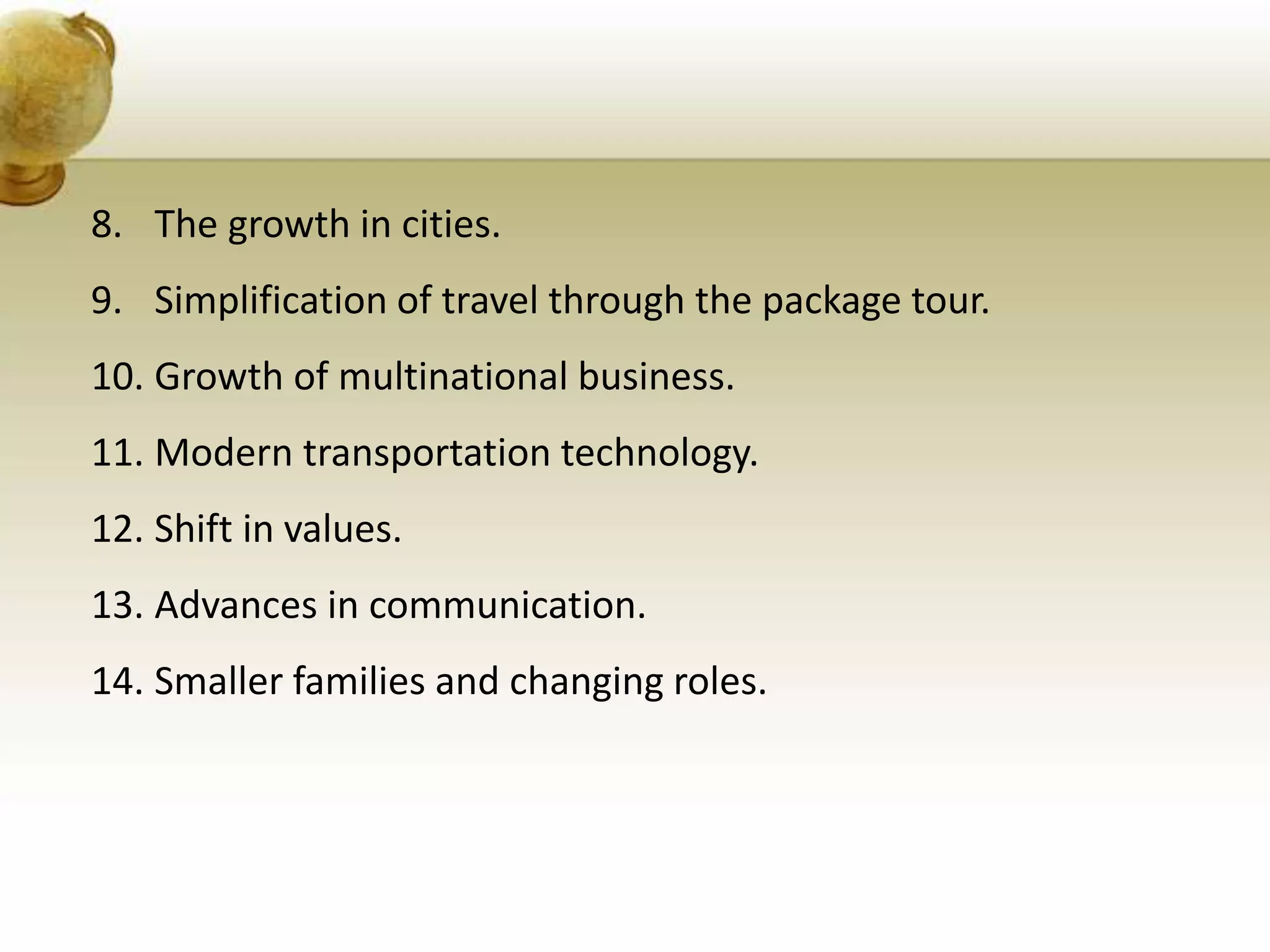The document summarizes the history of tourism from ancient times through the present. It discusses how early tourism consisted of travel for business and religious purposes. During the Middle Ages, travel declined due to unsafe conditions, but resumed during the Renaissance for education. The Industrial Revolution increased leisure time and the middle class' ability to travel. Modern tourism was shaped by developments in transportation like railroads, cars, planes. Governments now promote tourism as an economic driver. The Philippines' tourism industry began with informal travel and has grown through developments in transportation and infrastructure.
